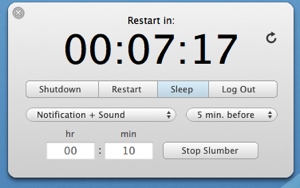Both the “Wall Street Journal” and the “New York Times” are reporting that Verizon will sell a CDMA version of the iPhone in 2011. In the U.S., that could help Verizon maintain its lead of total subscribers over rival AT&T and boost iPhone sales figures by an estimated 10 million handsets per year in 2011, according to “GigaOM” (http://macosg.me/2/y5).
Also, a CDMA iPhone offers Apple an even larger sales opportunity, as more than 543 million customers globally use CDMA networks. Adding a CDMA iPhone option, increases Apple’s addressable market for an iPhone by 16%, says Horace Dediu of asymco, a mobile research site. The estimated sales of 10 million Verizon iPhones account for only two percent of that potential market, affording Apple a big opportunity to boost iPhone sales outside of the U.S., he adds.
“If Apple sold iPhones to only 10 percent of the total addressable CDMA market, it would gain 54 million additional iPhone sales over time,” computes “GigaOM.” “With an average selling price of $600 per handset, that works out to $32.4 billion in revenue on a product with high profit margins. To put that in perspective: Apple’s total revenues for the 2009 fiscal year were $36.5 billion.”
If a Verizon/CDMA iPhone actually happened, this would be the first time Apple has produced a version of the iPhone for a CDMA wireless network, which is different from AT&T’s GSM technology. In cellular service there are two main competing network technologies: Global System for Mobile Communications (GSM) and Code Division Multiple Access (CDMA). Both boast “3G” standards, or 3rd generation technologies.
As noted by “wiseGEEK” (http://www.wisegeek.com/what-is-the-difference-between-gsm-and-cdma.htm), EVDO, also known as CDMA2000, is CDMA’s answer to the need for speed with a downstream rate of about 2 megabits per second, though some reports suggest real world speeds are closer to 300-700 kilobits per second (kbps). This is comparable to basic DSL. As of fall 2005, EVDO is in the process of being deployed. It is not available everywhere and requires a phone that is CDMA2000 ready.
GSM’s answer is EDGE (Enhanced Data Rates for GSM Evolution), which boasts data rates of up to 384 kbps with real world speeds reported closer to 70-140 kbps. With added technologies still in the works that include UMTS (Universal Mobile Telephone Standard) and HSDPA (High Speed Downlink Packet Access), speeds reportedly increase to about 275 — 380 kbps. This technology is also known as W-CDMA, but is incompatible with CDMA networks.




